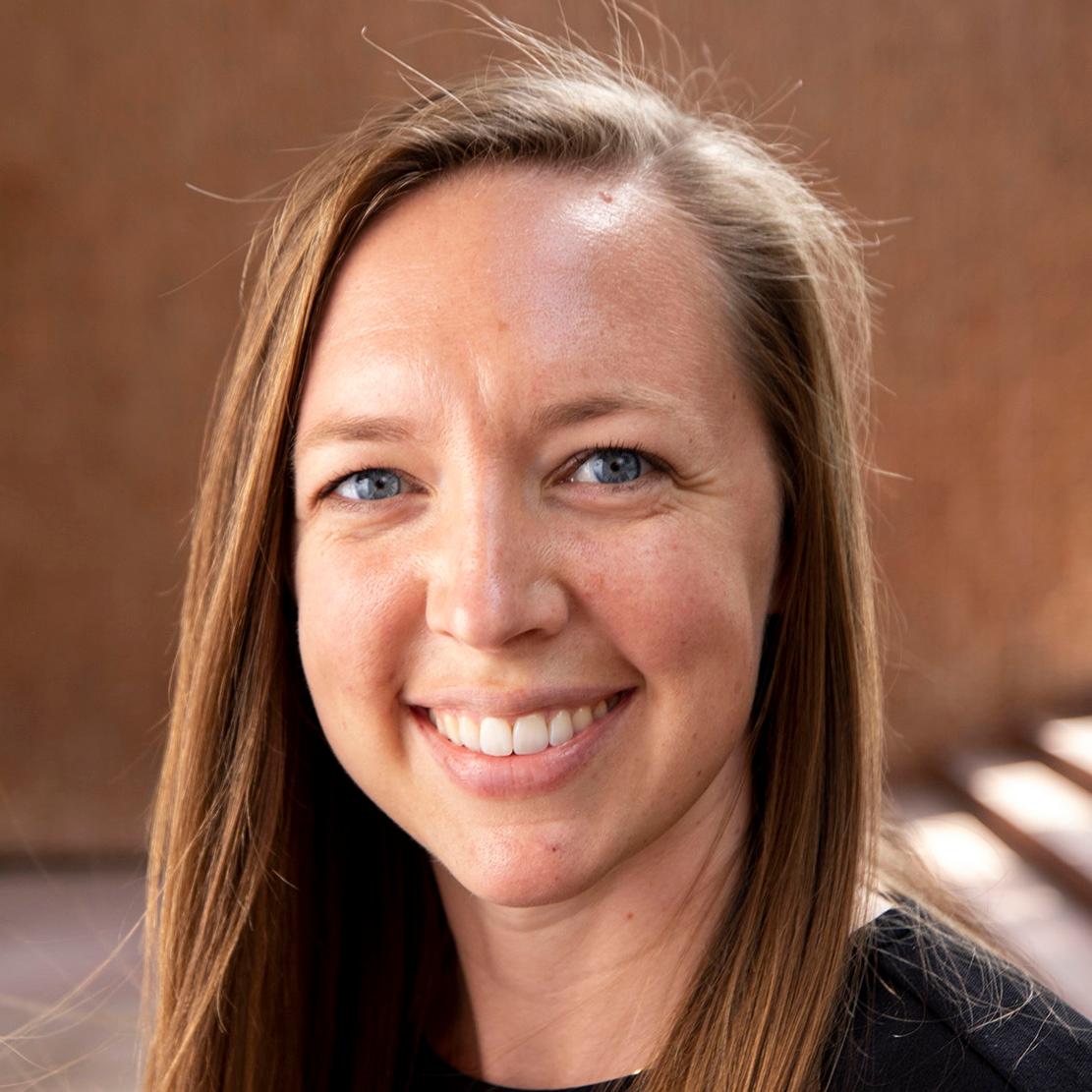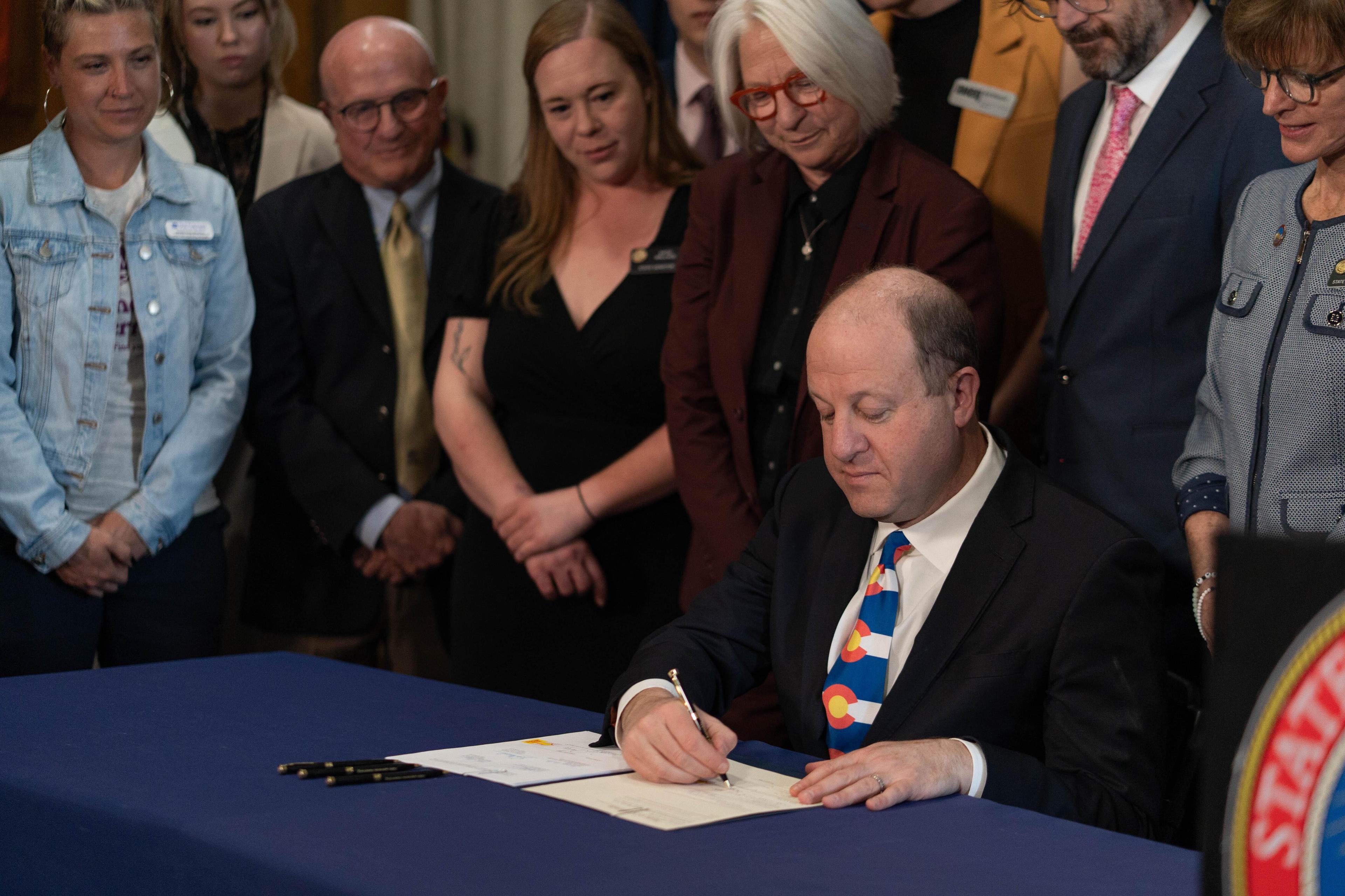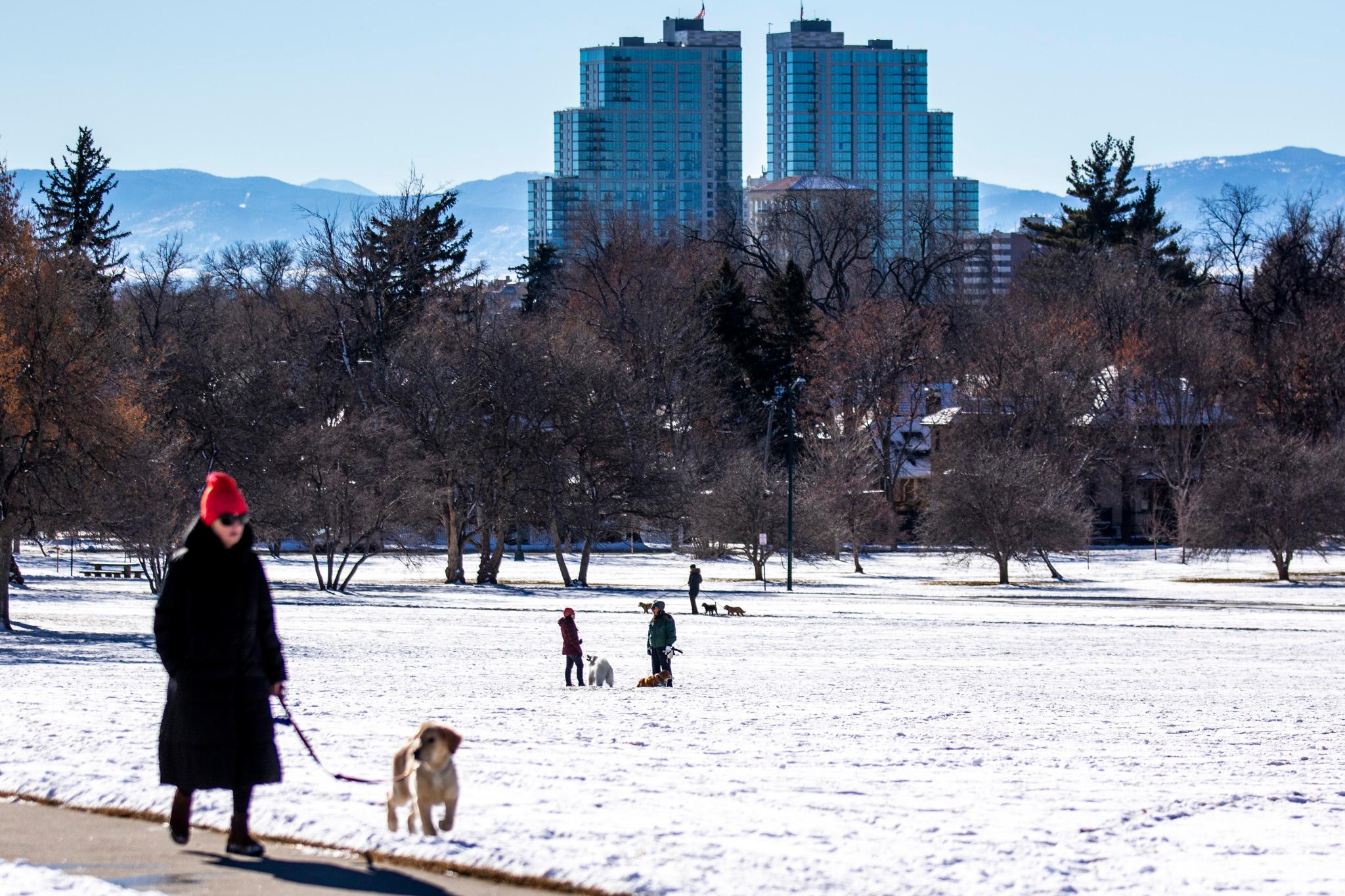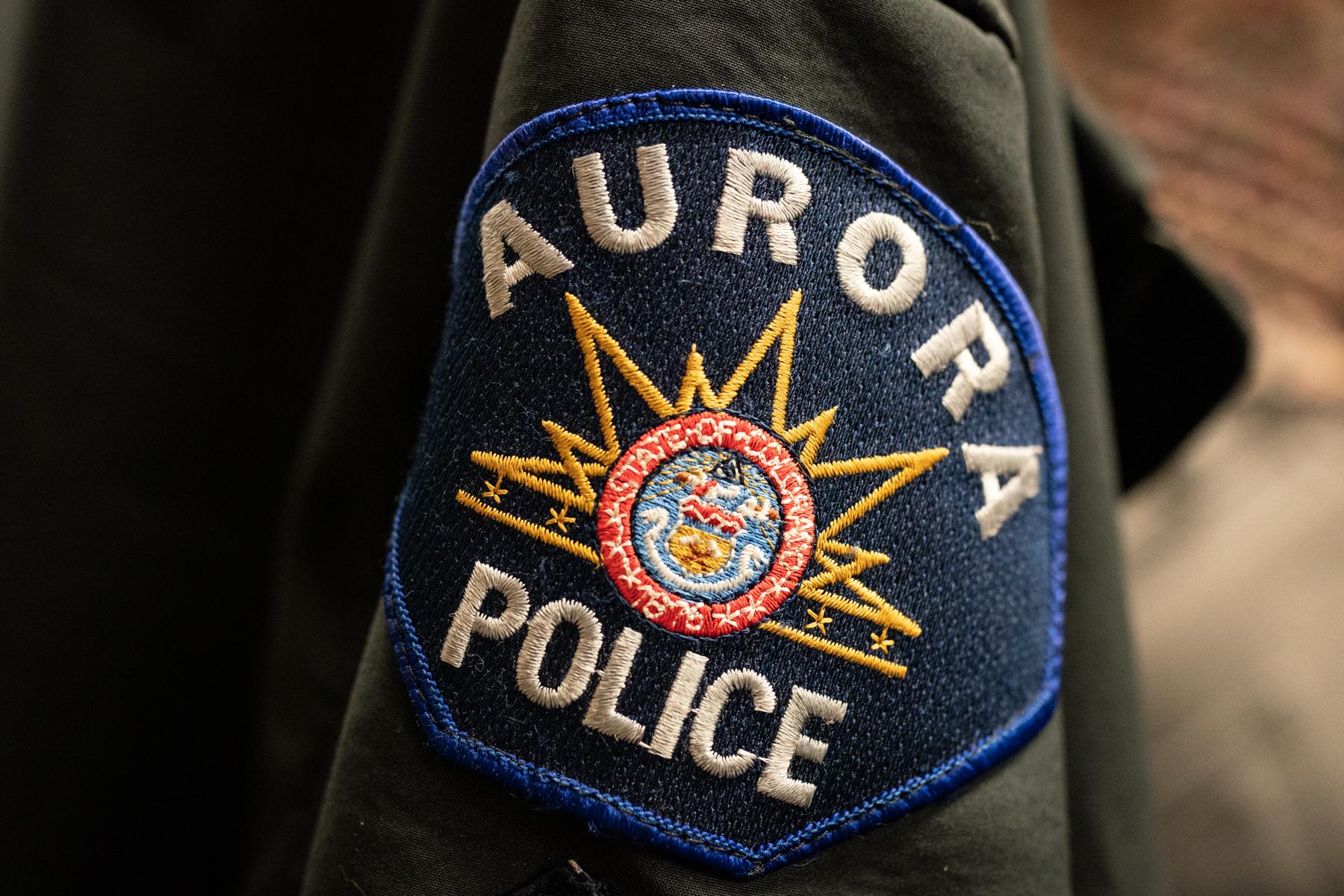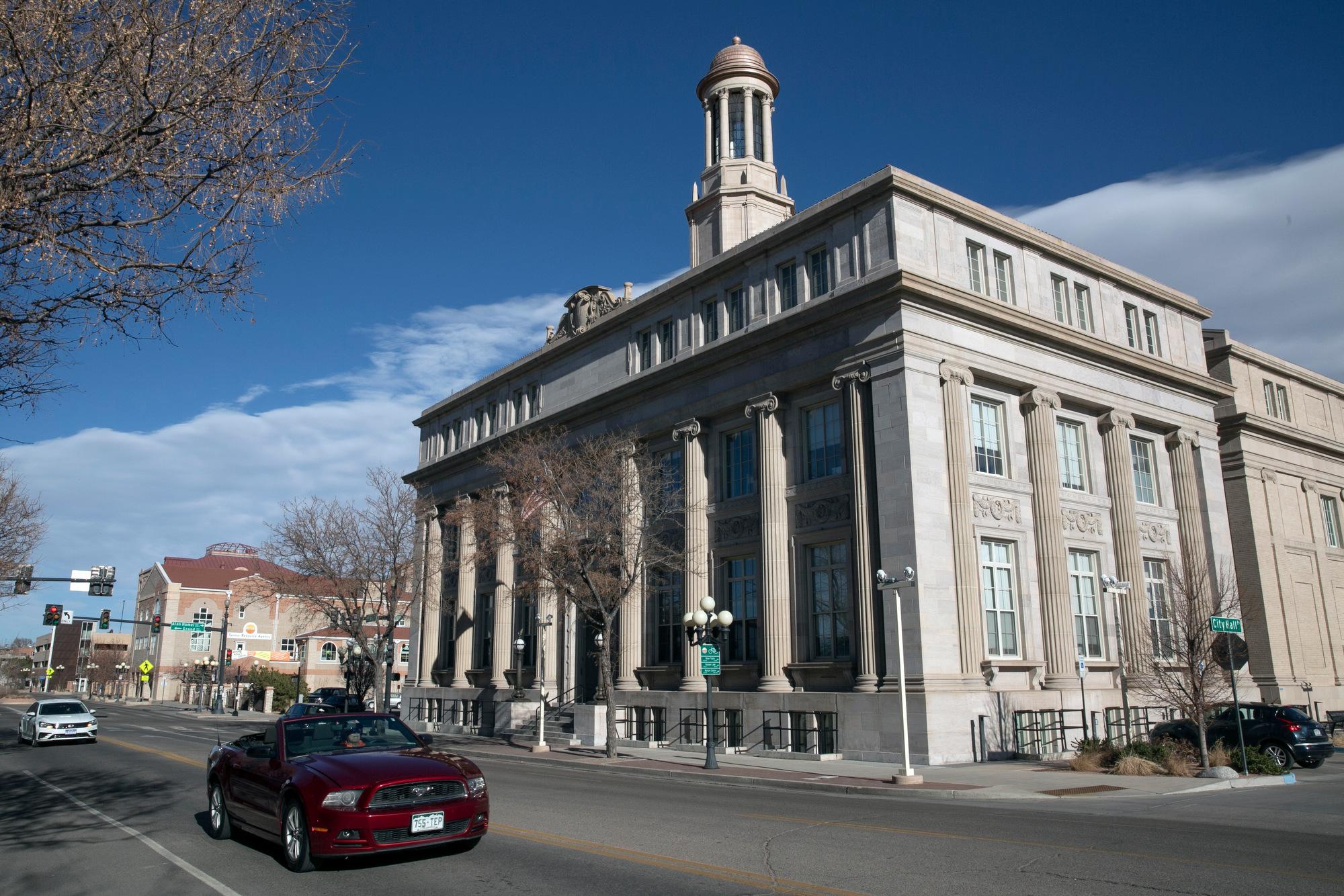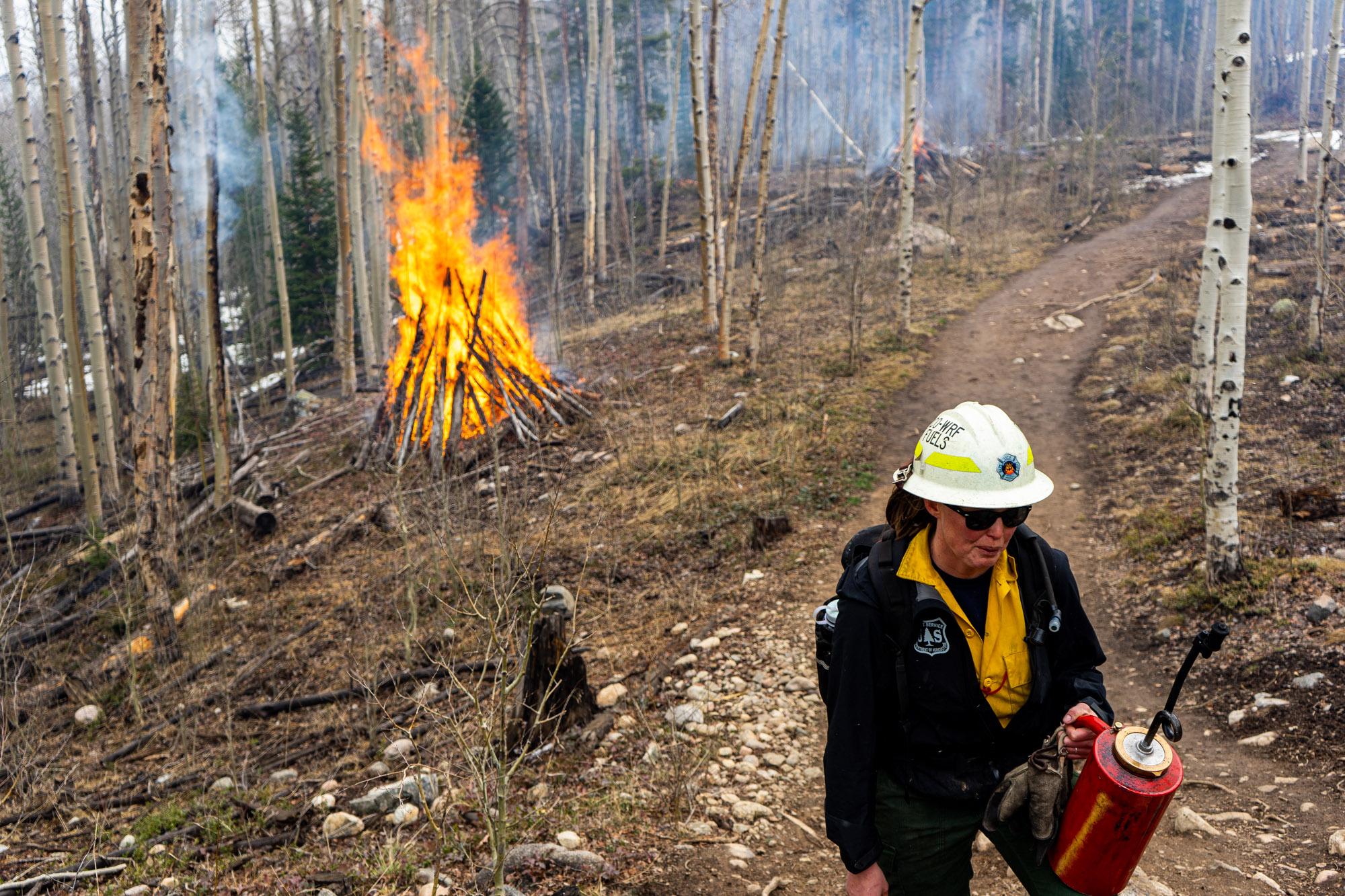
After a string of deadly and destructive wildfires in 2012, Gov. John Hickenlooper ordered state and local officials to meet with representatives from private sector companies affected by wildfire.
They were asked to create a plan to save lives and homes in future fires. After months of discussion, that group identified three actions the state could take to protect communities against the growing threat of wildfires: Create a risk map, a template for a statewide building code and a cohesive plan to clean up and thin the forests.
Nearly a decade later, Colorado has accomplished almost none of it.
In the 2022 legislative session, the Colorado Fire Commission endorsed a new wildfire board to create regulations for defending Colorado homes from wildfires, proposing some of the same solutions that the 2013 advisory committee identified. That, too, failed.
“It's the exact same conversation,” said Meghan Dollar, a legislative advocacy manager for the Colorado Municipal League who worked on the 2013 committee representing the interests of Colorado’s cities. “It's like Groundhog Day."
As climate change contributes to longer, more destructive wildfire seasons, Colorado continues to grapple with a tension between scientific research suggesting that mandatory wildfire building codes save lives and the state’s libertarian bent toward local control over difficult issues.
Carole Walker, executive director of the Rocky Mountain Insurance Information Association, worked on the 2013 advisory committee and is an ex-officio member of the Colorado Wildfire Commission. “We didn’t have the political buy-in at the time, and maybe the urgency,” she said, to move the committee’s recommendations forward.
The result is that the job of spreading wildfire awareness across the state continues to largely fall to homeowners and community volunteers.
Summit County has made a success out of this community-based approach. Residents there voted to increase their own taxes to fund wildfire mitigation projects. The county’s building committee created a building code for homes in the highest-risk areas. Representatives for local, state and national organizations all work together to determine the county’s wildfire priorities and deliver alerts and guidance to residents.
Dan Schroder, the Summit County director for the Colorado State University Extension program, said the county’s success came in part as a result of a “years-long PR and marketing campaign” to teach residents about the importance of thinning, clearing and prescribed burns to restore forest health.
That message resonated with residents like Terry Startzel, who moved to Keystone three years ago. His townhome is at the end of a wooded cul-de-sac, half-mile from the slopes of Keystone Resort, and Startzel says that he only found out after he moved about wildfire risk in his area. Startzel, now retired, took it upon himself to research wildfire risk and organize his neighbors to help clear land and apply for grants to fund more projects.
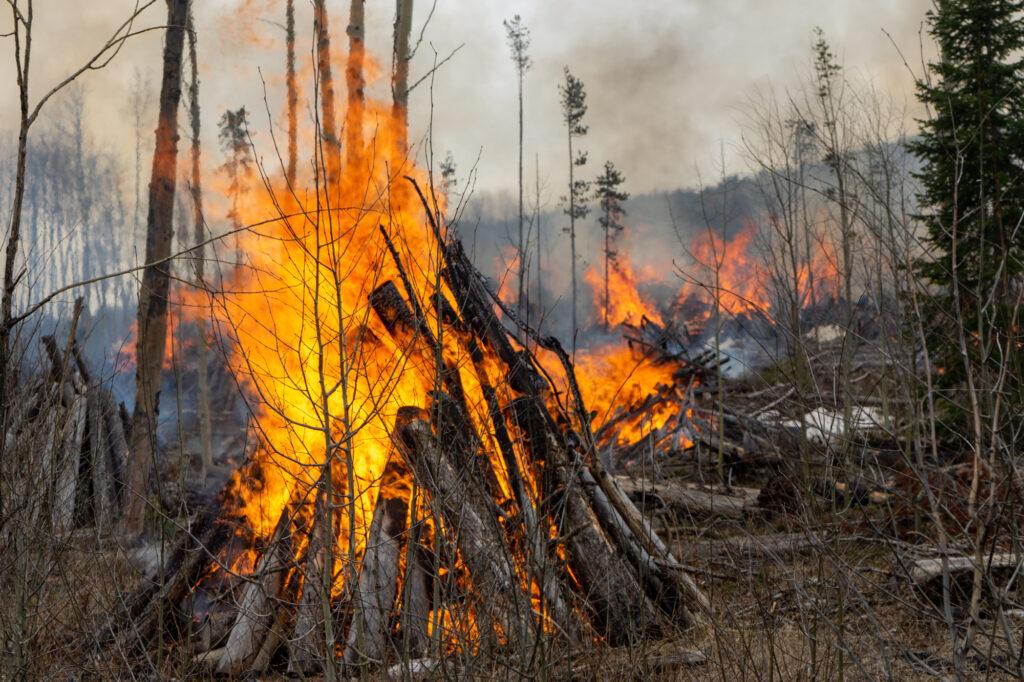
He coordinates his efforts with the Colorado State Forest Service, the Colorado State University Extension program and the Summit County wildfire council. He also helps organize volunteers, who he estimates work about a hundred hours a year helping clear forest debris.
Startzel said those volunteer efforts have been key for successful wildfire projects in the area. “It’s people wanting to help the forest, nature, themselves, protect the community,” said Startzel. “At the end of the day, it’s all about community.”
But Summit County has made more progress clearing land and hardening homes than the majority of Colorado’s counties. Cindy Latham, who founded a wildfire awareness initiative through her Rotary Club in Evergreen, moved to Evergreen from California four years ago. A marketing professional by trade, she was surprised at the lack of communication and coordination about wildfires in her area, which has more homes at risk from wildfires than any other county in the state, according to an assessment by Verisk.
As a county, “we just don't have the resources, the dollars, or whatever is the reason, but everything falls on the community to figure out what needs to be done here,” said Latham. “And it's, it's pretty overwhelming, I have to say.”
On May 7, 2022, Latham and a group of volunteers gathered at the Elk Creek Fire Department in Conifer, a forty-minute drive west of Denver. It was a gusty, record-hot day and the National Weather Service had issued a red-flag warning for fire danger.
The event was part of National Community Wildfire Preparedness Day, which is designed to teach communities and residents how to prepare for future fires. Rotary Wildfire Ready brought a retrofitted fire engine, which housed pull-out displays filled with educational displays filled with miniature homes and trees. Volunteers helped residents sign up for one of the three emergency wildfire alert systems in the county, depending on their address, and talked through how to make an evacuation plan and pack a go-bag.
Rotary Wildfire Ready has designed a website for residents to find wildfire risk information and guidance in one place. The group also helped apply for a Community Mitigation Assistance Team through the U.S. Forest Service. But Latham wants to see more guidance from the state.
“You can go from one county to the next county and everything's different, in terms of some of the rules and regulations that are in place,” said Latham. “I think it makes it hard for residents, and it makes it hard for communities to know what it is they should be doing.”
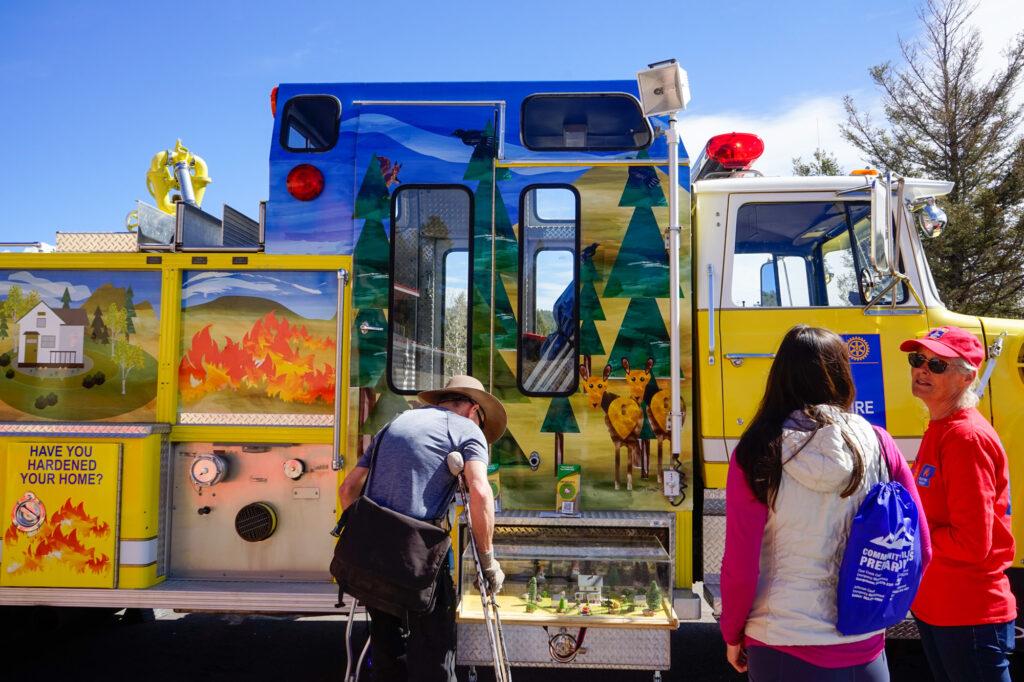
A wildland building code
The responsibility to lessen wildfire damage rests with the hundreds of cities, counties and fire districts across the state, each of which has created a unique Community Wildfire Protection Plan.
Yet those plans don’t necessarily mean that counties are preparing for future fires.
“Some of those community protection plans were developed in response to those rules and they have sat on a shelf,” said Hannah Brenkert-Smith, an associate research professor of behavioral science at the University of Colorado. And more than half of all Coloradans live in what is known as the wildland-urban interface, or WUI, according to the Colorado State Forest Service. That’s the part of the terrain most likely to be impacted by fire.
Discussions of how the state could help communities and homeowners have been going on for at least a decade.
Research in the years since has shown Colorado homeowners still underestimate their wildfire risk and overestimate the safety of their properties.
The recommendations that wildfire experts outline, and that Colorado itself identified in 2013, are not new science. California adopted similar measures back in 2008. For years, both the National Fire Protection Association and the Insurance Institute for Business and Home Safety have recommended strong, statewide wildfire building codes.
Michele Steinberg, the wildfire division director at the National Fire Protection Association, thinks a statewide, minimum building code would benefit Colorado while leaving counties the option to apply stricter policies.
“We don't want it so weak that it doesn't really do anything for anybody and you have a repeat of these disasters in 10 or 20 years’ time,” she said. “But to start with new builds, to start in the highest-risk areas, to set the ground rules that everybody has to abide by so that it's fair — I think that would be a huge, huge accomplishment.”
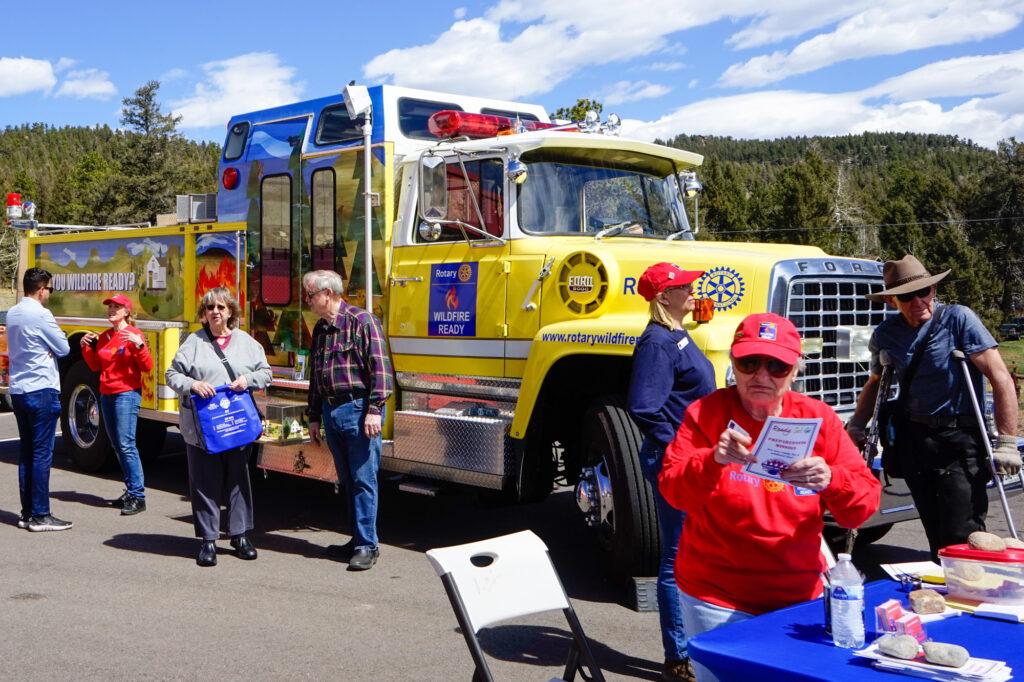
Statewide building code advocates say that even if a homeowner does everything right, neighbors who refuse to clear defensible space or use fire-resistant materials can put surrounding homes at risk. The N.F.P.A. guidelines encourage homeowners to manage risk in a 100-foot radius around a home. In neighborhoods, several homes with several owners could fall in that radius, and each homeowner might have a different idea of what a fire-safe property looks like.
In a hurricane, the construction of one home does not usually impact whether a neighboring home survives the storm. Wildfires are different.
“The wildfire does gain or lose strength by the buildings that become fuel for the wildfire. It changes it,” said Anne Cope, the chief of engineering for the Insurance Institute for Business and Home Safety. “The neighboring structures are a huge part of the overall risk for that one house.”
Building codes could also protect fires on the edge of wilderness areas, where homeowners may not have control over land management. In some subdivisions that Steinberg has visited, “the last homes to be built tend to be on the edge, and they might be on the edge of something like conservation land that nobody can touch a stick on,” she said. “Then all this overgrowth is right next to your house.”
But Steinberg says that homes anywhere, even if they are not officially in the WUI, can benefit from wildfire-resistant construction.
“Does it make sense to kind of have a fire-resistant structure when you're building any old place? Yes, it does. Yes, it absolutely does,” she said.
One challenge is resources. The state legislature has the authority to create a statewide building code, but counties are in charge of enforcement. Lesley Dahlkemper, the county commissioner for District 3 in Jefferson County, said her county’s current wildfire building code, which regulates building materials for new construction in the WUI, could be stronger than anything the state proposes. If that were the case, it would not put extra strain on the county’s resources.
But counties that do not already have wildfire building codes would likely need technical assistance or funding support if a statewide code were adopted. “We have to be sensitive, especially to counties that are stretched thin in terms of their budgets,” said Dahlkemper.
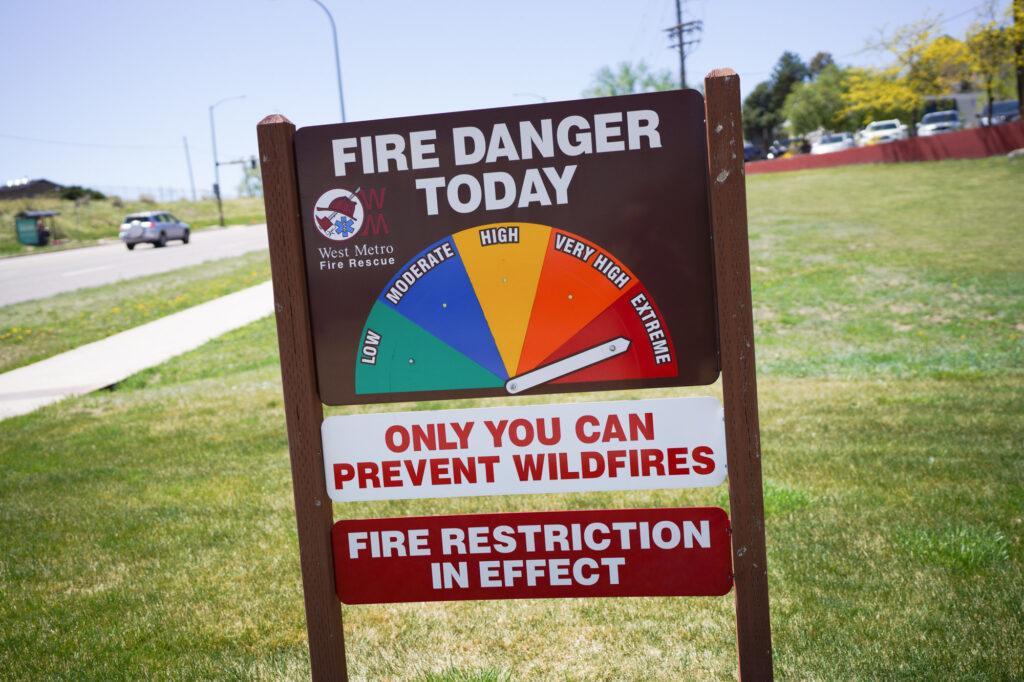
Local control can also pit economic incentives against safety. A city or county might support development to bring in more revenue from taxes, and the state’s need for affordable new homes drives new construction on the periphery of urban areas. If a single county enacted its own building codes, new developments could be more costly to build.
All of those factors, according to building code opponents, could drive developers to neighboring counties, where the cost to build and administrative hurdles are lower. However, a 2018 analysis by Headwater Economics in Montana found that building a new home with wildfire-resistant roofing, siding and landscaping could actually save buyers money – about two thousand dollars for a $350,000 home. Updating the roof and siding on an existing home with those same materials would cost an owner more than $60,000.
To develop a statewide code, Colorado would first need an agreed-upon calculation of where the wildland-urban interface in the state actually is. The Colorado State Forest Service already has a statewide map and the 2013 panel wanted to give the forest service more money and resources to make the map more detailed. But staff say that effort never got past a recommendation.
In California, there’s just one WUI map, managed by CalFire. But in Colorado, each city and county has mapped its own WUI areas. That’s more than two hundred separate maps.
Homes burned in the Marshall Fire did not fall under Boulder County’s wildfire building codes, which apply to properties west of the line formed by US-93 and US-36. But the Colorado State Forest Service’s map identifies them as a high wildfire risk area and part of the state’s WUI, according to Amanda West Fordham, the associate director of science and data at the Colorado State Forest Service.
Dahlkemper described the Marshall fire as “an absolute wake-up call” about the risk Colorado communities face. “We don't have a choice” when it comes to state-level action on wildfire preparedness, she said. “This is an issue that's not going away anytime soon and we've gotta keep our community safe. We wanna make sure we do everything possible to ensure that people have a home to come back to if there is a fire.”
“Really the best time to start to use sound code standards, ordinances, regulation, is now,” said Steinberg. “There will be another disaster. I hate to say it, but there will be. And so let's work on it now.”
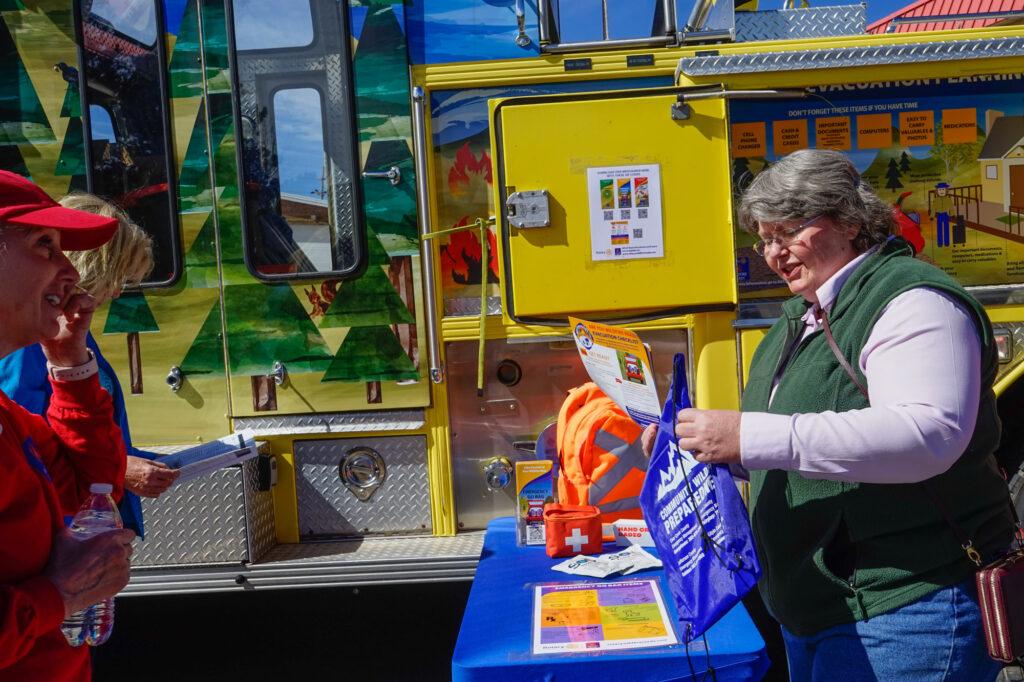
Other states are better prepared for wildfire
In November 2021, Lisa McBee moved into her new home in Conifer. McBee, who moved to Colorado from Houston, knew there was some wildfire risk in her new neighborhood, but she did not realize how extreme it was.
McBee did not know her home was at risk for a simple reason: during the sale process, no one told her. In Colorado, Realtors are not required to disclose wildfire risk to properties during the sales process. She says she instead found out through discussions on Nextdoor, a neighborhood messaging app, where she also learned about resources through her local fire department. She later scheduled a FireWise inspection to learn how to make her home more resilient, which recommended she clear out vegetation on the property.
“Nobody wants to cut down 50 trees on their property, but then I also want to save my home,” said McBee.
Still, she said she would have appreciated more information about risk before moving in. “Would I have not moved here?” said McBee. “I don't know. I mean, I love my house and I love our view and it's beautiful, but, I don't know if I would've not moved there because of that.”
After she finishes her property, McBee hopes to help her neighbors make their properties safer.
“The house next door, it’s like a thick forest to get to their house,” she said. “When we finish ours, I’d be happy to go over and help them, but you don’t know people’s circumstances — whether they can’t physically do it themselves, they don’t have the time to do it, they can’t afford to do it.”
Other states have also found answers to some of the obstacles to wildfire safety. In California, homeowners selling homes are required to bring their home up to code by making repairs or clearing defensible space prior to the sale. The home’s wildfire risk is also disclosed to the person purchasing the property, meaning a realtor wouldn’t risk losing a sale by telling potential buyers about wildfire risk if other realtors were not disclosing that information. Buyers like McBee in Conifer would always have wildfire risk information before the sale closed.
In Oregon and California, state agencies have mapped wildfire risk in the wildland-urban interfaces where homes and businesses meet forests and grasslands. Both states have also adopted statewide building codes in areas at risk of wildfire, understanding that even one home with flammable roofing or overgrown land in a community could spread flames to other properties.
“California and Oregon have been much more forward-thinking on this, in terms of implementing mandates and regulatory measures, than Colorado has,” said Brenkert-Smith.
In the meantime, volunteers like Latham are still working to get residents prepared.
“We need to do something, you know, we can't just sit on our hands and wait for it to happen,” said Latham. “But it shouldn't be that way. It really shouldn't.”
Correction appended on 5/25/2022: Michele Steinberg is the wildfire division director at the National Fire Protection Association. An earlier version of the story contained an incorrect title for her.
